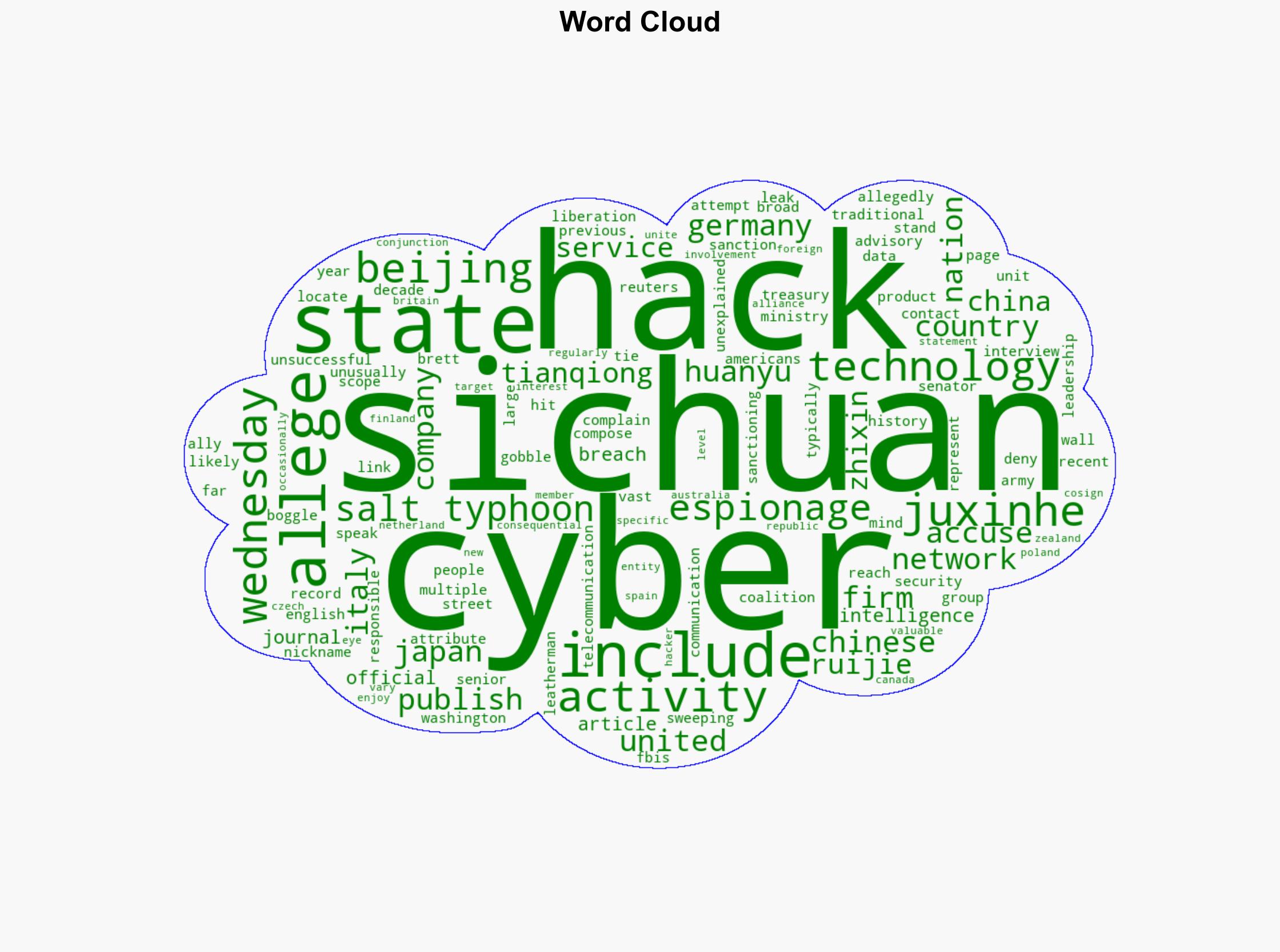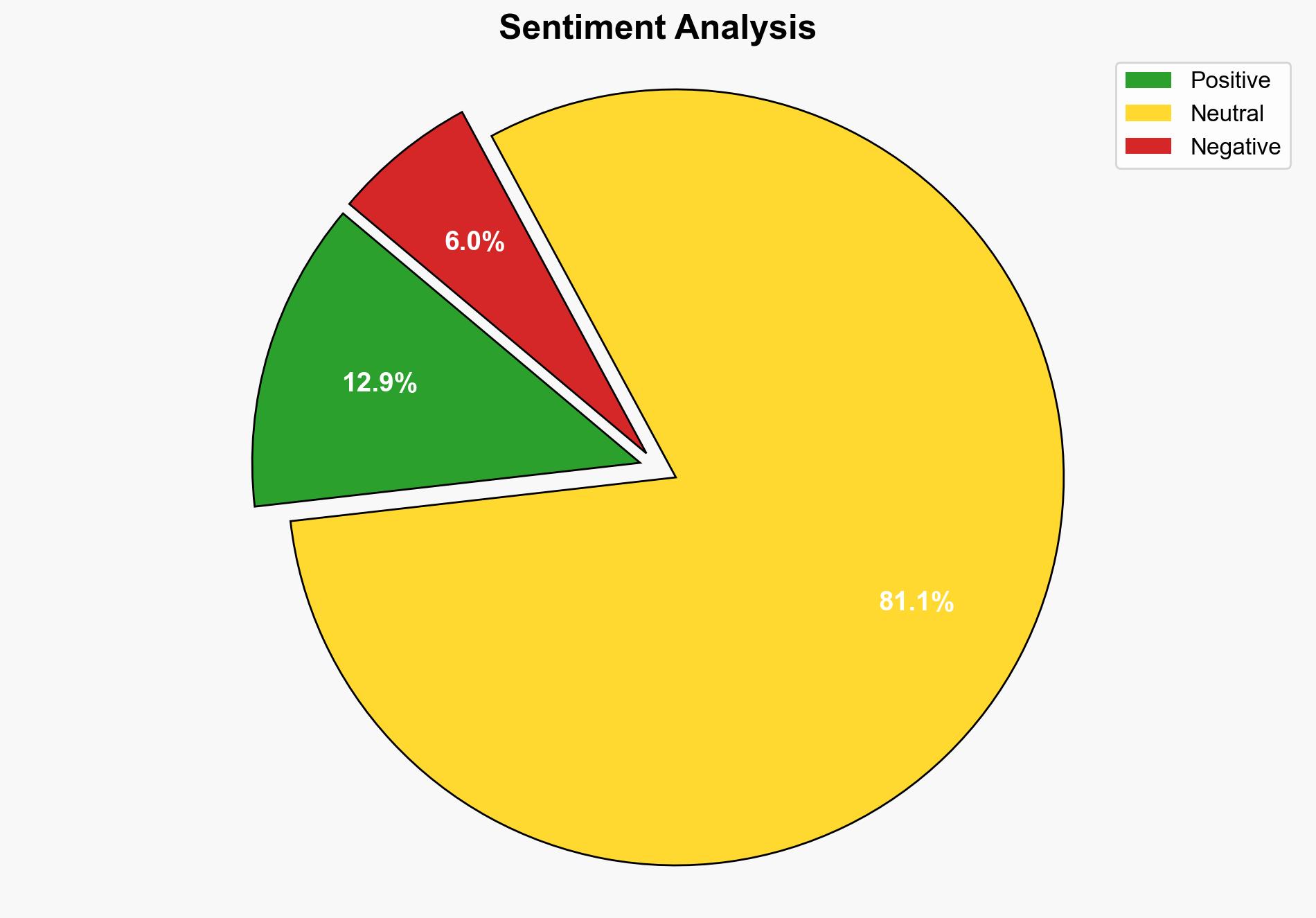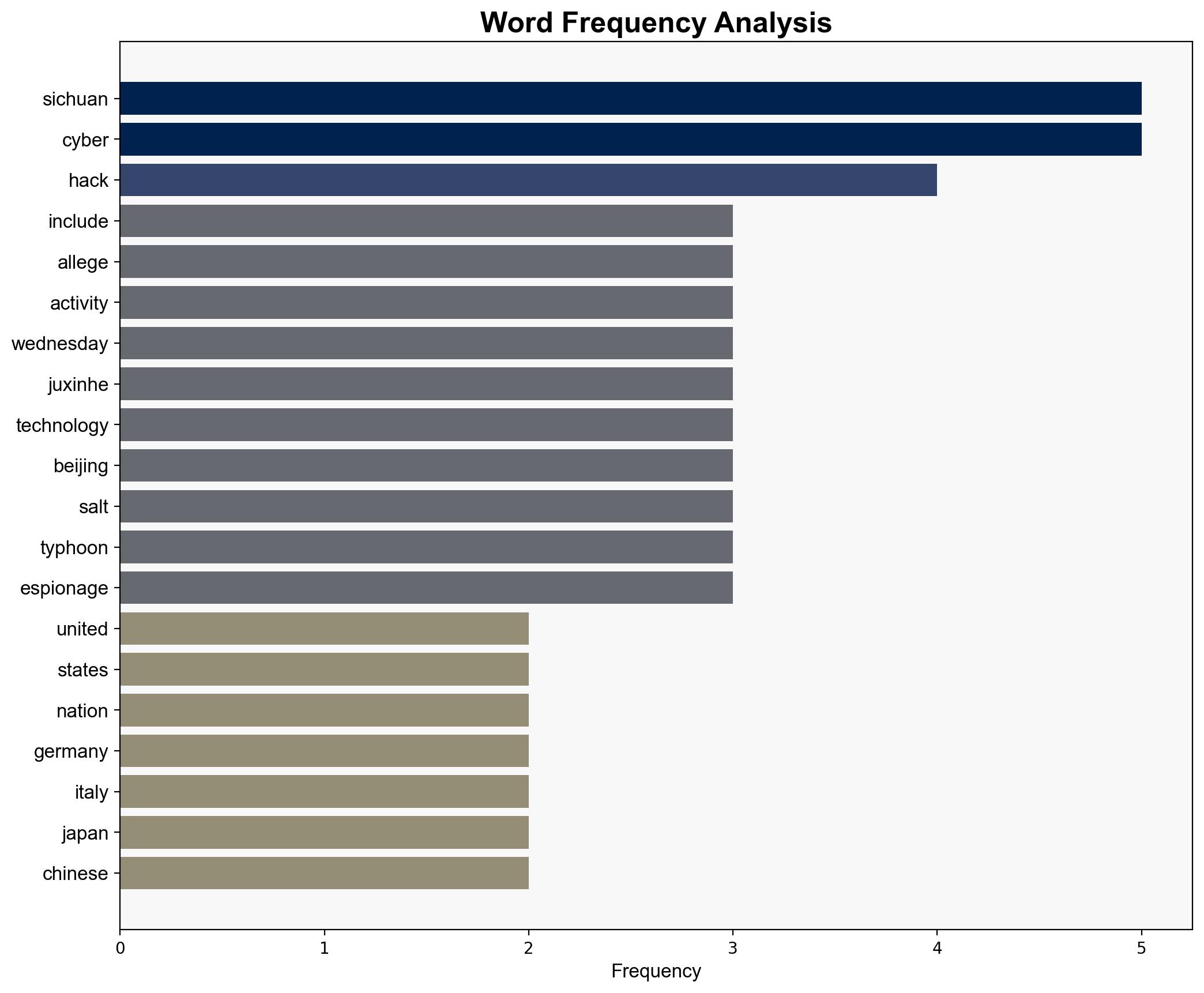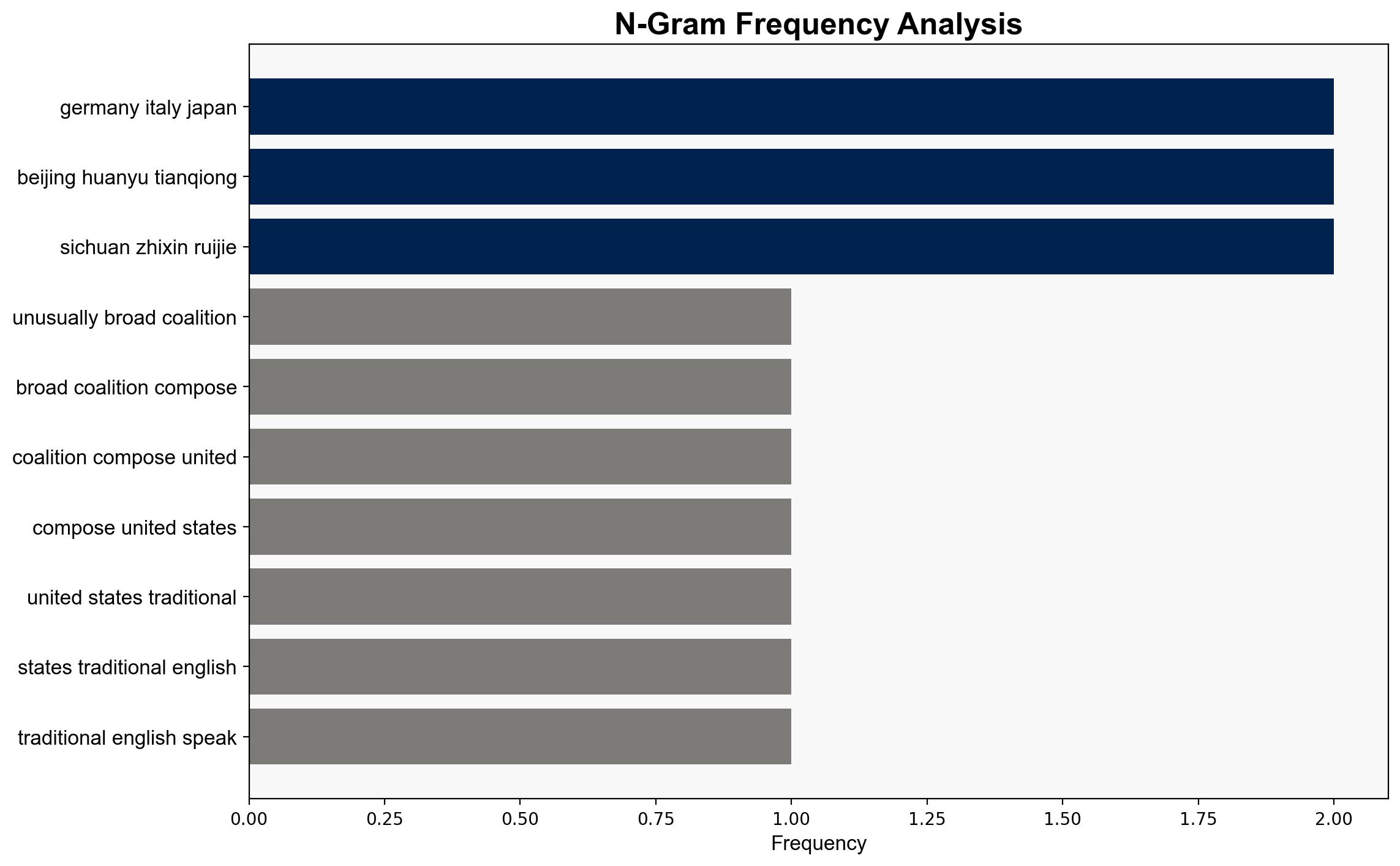International Coalition Calls Out Three Chinese Companies Over Hacking Campaign – Insurance Journal
Published on: 2025-08-28
Intelligence Report: International Coalition Calls Out Three Chinese Companies Over Hacking Campaign – Insurance Journal
1. BLUF (Bottom Line Up Front)
The most supported hypothesis is that the accused Chinese companies are engaged in state-sponsored cyber espionage activities, likely coordinated by Chinese intelligence services. This conclusion is based on the broad international coalition’s unified stance and the historical context of similar activities. Confidence level: Moderate. Recommended action: Strengthen international cybersecurity cooperation and enhance defensive measures against potential cyber threats.
2. Competing Hypotheses
1. **Hypothesis A**: The accused Chinese companies are actively involved in state-sponsored cyber espionage, coordinated by Chinese intelligence services, targeting sensitive information from Western nations.
2. **Hypothesis B**: The accusations against the Chinese companies are exaggerated or misattributed, possibly due to geopolitical tensions or misinterpretation of cyber activities.
Using ACH 2.0, Hypothesis A is better supported by the coalition’s broad and unified response, historical precedence of similar activities attributed to China, and the specific mention of ties to Chinese intelligence services. Hypothesis B lacks substantial evidence and contradicts the coordinated international response.
3. Key Assumptions and Red Flags
– **Assumptions**: Hypothesis A assumes that the coalition’s intelligence is accurate and that the Chinese companies have direct ties to state-sponsored activities. Hypothesis B assumes potential bias or errors in attribution.
– **Red Flags**: Lack of direct evidence publicly disclosed, potential geopolitical bias, and the absence of responses from the accused companies.
– **Blind Spots**: Limited visibility into the internal operations of the accused companies and potential undisclosed diplomatic communications.
4. Implications and Strategic Risks
– **Patterns**: Repeated accusations against Chinese entities suggest a persistent threat of cyber espionage.
– **Cascading Threats**: Potential escalation in cyber warfare tactics and retaliatory measures by affected nations.
– **Economic Risks**: Potential impact on international trade relations and cybersecurity investments.
– **Geopolitical Risks**: Strained diplomatic relations between China and the coalition countries, potentially affecting broader international cooperation.
5. Recommendations and Outlook
- Enhance cybersecurity infrastructure and intelligence-sharing mechanisms among coalition members.
- Engage in diplomatic dialogues with China to address and mitigate cyber espionage concerns.
- Scenario Projections:
- Best: Successful diplomatic resolution and reduction in cyber threats.
- Worst: Escalation into broader cyber conflicts and economic sanctions.
- Most Likely: Continued cyber threats with intermittent diplomatic engagements.
6. Key Individuals and Entities
– Sichuan Juxinhe Network Technology
– Beijing Huanyu Tianqiong Technology
– Sichuan Zhixin Ruijie Network Technology
– Brett Leatherman
7. Thematic Tags
national security threats, cybersecurity, counter-terrorism, regional focus





